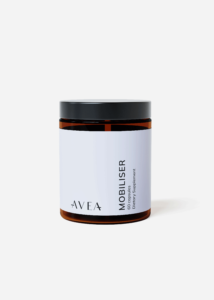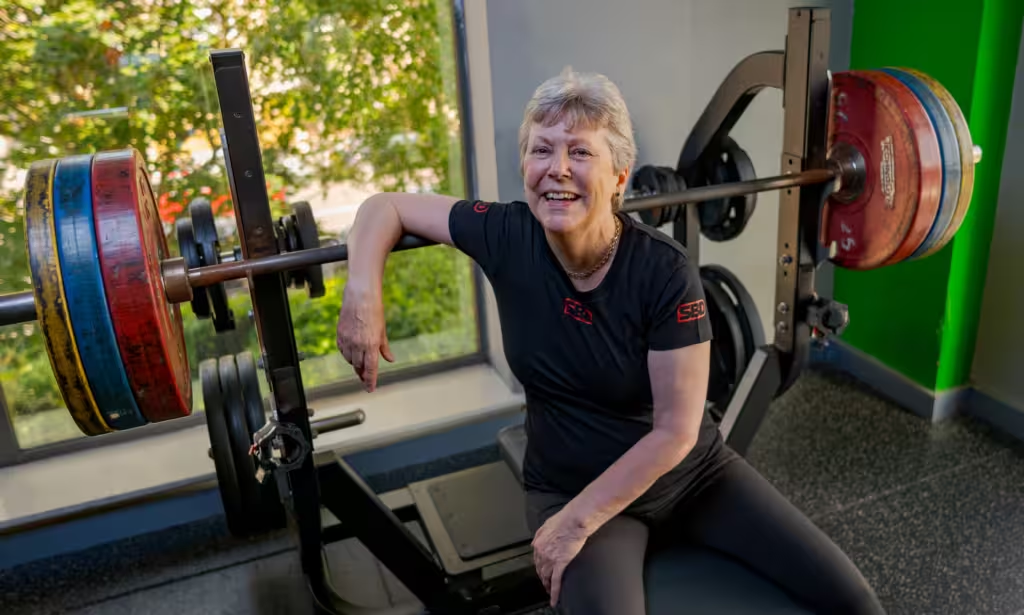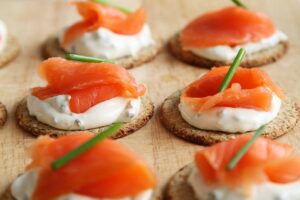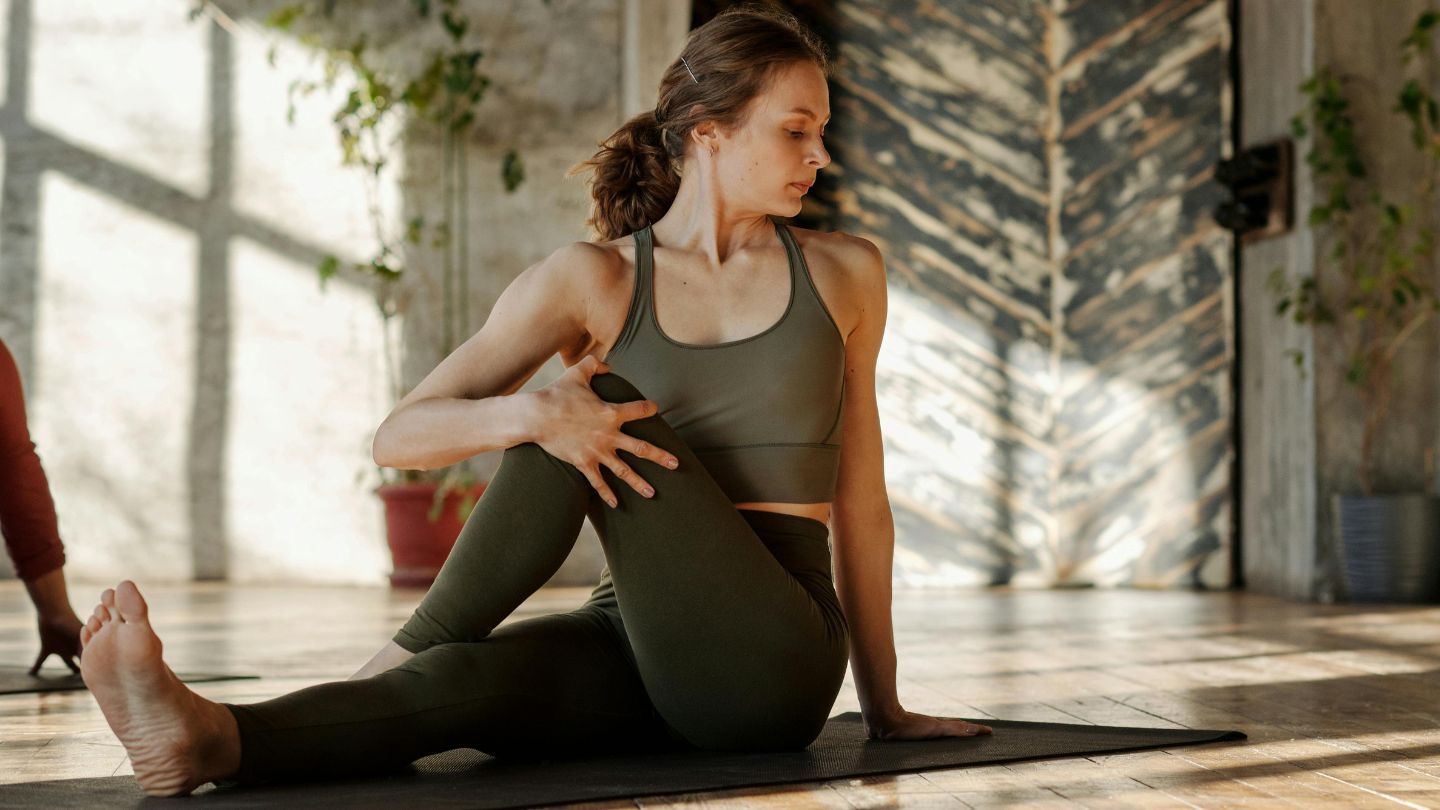Whether you’ll achieve your goals or finally tick off that bucket list of travelling the world is still up for debate. But one thing we do know for certain? You are losing muscle mass as you age.
After 30, you start losing about 3-5% of your muscle mass every decade. Let’s break that down: by the time you hit your later years, you could have lost up to 30% of your muscle mass.
This gradual, seemingly inevitable muscle loss is called sarcopenia. If left unchecked, it could be the main culprit behind most health issues as you grow older.
Think about it. How did your grandparents look in their 80s? Fragile? Weak? Did they suffer falls or fractures? A 2015 study found that people with sarcopenia are 2.3 times more likely to experience low-trauma fractures from falls—everything from a broken hip, collarbone, leg, arm, to your wrist.
But let’s not get stuck in a black-and-white mindset. Losing muscle doesn’t mean it’s gone forever—it just means it’s time to shift gears. Now, the mission is to rebuild those muscles.
Your focus should be on gaining muscle as you age. Yes, it takes effort, discipline, and a plan. But it’s never too late to start stacking those gains and building a safer, stronger future.
Whether you’ve lifted before or not, it doesn’t matter. Your body’s ability to build muscle changes as you age—and that’s exactly why you need to focus on strength, mobility, and stability training.
In this Avea article, we’ll show you how you can build muscles after your 50s. As Masego says, ‘’wise man said age ain’t nothing but a number.’’
In this article
Free guide to reverse your biological age

- Master the science of rejuvenation.
- Apply proven tips to turn back the clock.
- Transform your health with top longevity specialists.
Why is strength training important after 50?
As we age, muscle loss—known as sarcopenia—becomes more pronounced. Sarcopenia can begin as early as your 30s, and without intervention, it accelerates with age.
Losing muscle mass leads to decreased strength and functional ability, making everyday tasks like climbing stairs or carrying groceries more difficult.
This is where strength training comes into play. By stimulating muscle growth and preserving bone density, it helps maintain independence and reduces the risk of falls and fractures, as you grow older.
In fact, experts confidently claim that strength training is one of the most effective ways to fight frailty in older adults.
Studies have shown that regular strength training improves not only physical strength, but also mental and emotional well-being, providing a comprehensive boost to quality of life.
Let’s explore how strength training can benefit your body and mind.
Key benefits of strength training after 50
Prevents muscle loss
Let’s be honest, losing muscle as you age isn’t a matter of if—it’s a matter of when. By regularly challenging your muscles, you tell them to keep growing, which counters sarcopenia.
And this isn’t just about lifting heavy weights—it’s about making sure you can still walk, lift, and even get out of a chair without help when you’re older.
As we age, there’s also an increased risk of developing sarcopenic obesity—a condition where you lose muscle mass, whilst gaining body fat.
This is a particularly dangerous combination because it makes it harder to maintain a healthy weight and increases your risk for chronic diseases like diabetes and cardiovascular issues.
Strength training becomes essential not only for preventing muscle loss but also for combating fat gain. Regular weight training keeps your metabolism active, making it easier to maintain a healthy body composition and keep sarcopenic obesity at bay.
Improves bone density
Osteoporosis—it sounds like one of those conditions you hear about, but don’t think will happen to you. Sadly, it’s a reality for many as they age. Strength training strengthens your bones too. It encourages your bones to retain calcium, making them stronger and lowering the risk of fractures. And strong bones? That’s fewer broken hips or wrists down the line.
Boosts your metabolism
Here’s the kicker: muscle burns more calories than fat, even when you’re resting. So, as you build muscle through strength training, your metabolism gets a boost, helping you manage your weight more easily. This is especially handy as metabolism tends to slow with age—something older adults know all too well.
Enhances your balance and reduces risks of falling
Falls are one of the biggest risks for older adults, and it comes down to your balance and strength. Strength training builds up the muscles that help with stability, particularly in your legs and core. The result? You’re less likely to take a tumble, and everyday activities like walking or climbing stairs become much easier.
Manages chronic conditions
Struggling with arthritis, diabetes, heart disease, or back pain? Strength training has been shown to reduce symptoms of these chronic conditions. It strengthens the muscles around your joints, reducing joint pain from arthritis. It can even improve blood sugar control for people with diabetes by making your body more sensitive to insulin. In short, strength training can help manage what life throws at you as you get older.
Improves your mental health
The benefits don’t stop with your body—your mind gets a workout too. Strength training can do wonders for mental health. Here’s how:
- Reduces symptoms of depression: Exercise triggers the release of endorphins—your body’s natural mood boosters. Regular strength training helps reduce feelings of depression and anxiety by improving brain function and emotional well-being.
- Boosts self-confidence: There’s something undeniably satisfying about seeing progress, whether it’s lifting heavier weights or simply feeling stronger. This boost in self-confidence is especially important for older adults, who may feel their independence slipping away as they age.
- Improves sleep quality: Struggling to get a good night’s sleep? Regular strength training has been linked to improved sleep patterns. Those who train often report falling asleep more easily, staying asleep longer, and waking up feeling properly rested.
“If you are interested in living a long and healthy life and playing with your great-grandkids someday, then muscle mass should be a priority. Never in the history of human civilisation has a 90-year-old said, ‘I wish I had less muscle.’ We lose roughly 1% of muscle every year from our mid-50s; by 80, the average person will have shed 8kg, or about 18lb. Not only does this make it harder to carry the shopping or open stuck jars; it undermines our balance and weakens our bones, making it more likely both that we will injure ourselves and that we will fail to get over it.” –Dr. Peter Attia.
Why you should manage expectations
By now, you likely understand the critical role muscle building plays as you age. However, we can’t ignore the fact that developing new muscle becomes increasingly challenging, particularly after 50.
Let’s take identical twins, as example. One of them gains a lot of muscles, whilst the other doesn’t. Now the muscular one stops working out for two years, and both twins have the similar bodies again.
Both start training and doing exactly the same, same workout plan, same diet. Will the person who has been muscular before gain muscle mass more easily than the other one?
Yes, the twin who had previously gained a lot of muscle is likely to regain muscle more easily compared to the one who never did.
This phenomenon is called “muscle memory,” and it refers to your body’s ability to more efficiently rebuild muscle mass after a period of detraining.
The reasons behind this are:
- Muscle nuclei retention: When muscles grow, the number of nuclei in muscle cells increases to support the added mass. Even when muscle mass is lost due to inactivity, these nuclei remain for a long time. This allows for quicker muscle regrowth when training resumes.
- Neurological adaptation: The person who has been muscular before has already trained their nervous system to efficiently recruit and coordinate muscles during exercise. This gives them an edge when returning to training.
- Epigenetic changes: Some studies suggest that previous muscle growth can lead to long-lasting epigenetic changes that improve the body’s ability to build muscle again in the future.
Even though the other twin starts training under the same conditions, the one who has been muscular before will likely experience faster gains due to these physiological advantages.
Similarly, if you see someone over 50 with a muscular build at the gym, it’s likely they gained the bulk of their muscle before turning 40. It’s far easier to maintain what you’ve already developed. But here’s the thing—there’s always a first time for everything.
So, whilst you might not be adding large amounts of muscle every month after 50, it’s still possible to make gradual strength gains and even some increases in muscle size.
It’s worth mentioning that genetics and hormones also play a role in how easily you can build muscle after 50.
As men age, testosterone levels naturally decline, which can reduce your body’s ability to increase muscle mass. Some people may also find that their genetics make it harder to build muscle, even when following the right plan.
But don’t let this discourage you—understanding these factors means you can adjust your expectations and tailor your approach. It might take a little longer, but with consistency, you’ll still see results.
The key? Taking nutrition and recovery just as seriously as your training. Even modest muscle gains, paired with lower body fat, can have a striking visual impact.
The goal is to gradually increase your workout volume—weight, reps, and sets—as your strength and endurance improve.
Can our muscles stay young even as we get old?
Even though your muscles don’t respond as quickly to exercise as they did in your 20s, the science behind muscle growth remains the same.
When you engage in strength training, your muscles contract, and this contraction sends signals at the cellular level, triggering a cascade of chemical responses.
Over time, these signals activate certain genes, which produce proteins that help your muscles grow bigger and stronger.
Whilst this process slows down as you age—especially after 50—it’s still very much alive. In fact, continuing to exercise ensures that these muscle-building signals keep firing, allowing you to maintain and even build muscle mass.
When you do resistance or strength training, very important chains of molecules that relay signals between cells are affected, and these changes linger in the body for hours after exercise, building up a cumulative, positive effect. Even a low-intensity strength and walking program has substantial benefits. ”
—Roger A. Fielding, Ph.D., associate director, Jean Mayer USDA Human Nutrition Research Center on Aging, Tufts University
7 science-proven tips for building muscles after your 50s
First things first–your mindset is everything. If you believe you can’t, you won’t. Faith is all it takes to change the narrative around.
You are building muscles for your own good. Don’t accept anything besides knowing that, you can, of course, build muscles, and it’s never too late to start. It will be a slow process, but well worth it.
1. Protein is king
Muscle growth depends heavily on protein. Your body breaks protein down into amino acids, which are then used to build muscles through a process called muscle protein synthesis.
This is particularly important as we age, since older adults often experience anabolic resistance—a phenomenon that reduces the body’s ability to break down and synthesise protein efficiently.
A 2015 study emphasised that eating more protein helps “counterbalance muscle loss” by providing more amino acids for muscle protein creation.
A more recent study suggests that older adults engaged in resistance training require 1.2 to 1.7g of protein/kg of body weight per day, higher than the typical recommendation due to reduced amino acid availability with age.
For example, someone weighing 79 kg would need approximately 95–134g of protein daily.
To optimise muscle protein synthesis, it’s beneficial to distribute protein intake evenly across meals.
Whilst lean meats like poultry, eggs, and dairy are excellent protein sources, it’s wise to limit red and processed meats due to high saturated fat and additives. Healthier alternatives include:
- 100g of lean chicken or salmon (31g and 24g of protein, respectively)
- 170g of plain Greek yoghurt (17g)
- 250ml of skimmed milk (9g)
- 1 cup of cooked beans (about 18g)
For those who struggle to meet protein requirements through food alone, protein powders can provide an additional 30g per serving, ideal for adding to smoothies, oatmeal, or yoghurt. Whilst whole foods are preferable, supplements can help ensure adequate intake.
To further enhance muscle growth and recovery, consuming a post-exercise meal or drink with a 3:1 or 4:1 carbohydrate-to-protein ratio within 30 minutes of finishing your workout is recommended. A simple example is 250ml of chocolate milk, offering around 22g of carbohydrates and 8g of protein.
Ultimately, determining your ideal protein intake depends on your individual needs. Adjust based on total calorie intake, track progress, and fine-tune until you reach the right balance for building muscle without gaining excess fat.
For women, reaching a daily intake of 150g of protein can often be more challenging due to lower overall calorie needs and body weight compared to men.
In the end, there are anatomical differences that can’t be ignored. Still, starting with 120g of protein per day is already a significant step in the right direction.
This amount can support muscle growth and recovery, particularly if spread evenly across meals. Gradually increasing protein intake from there can further enhance results without feeling overwhelming.
Prioritising protein-rich foods and supplementing when necessary can help women meet their goals effectively without needing to make drastic changes.
As well as increasing your overall protein intake, focusing on branched-chain amino acids (BCAAs) can help maximise muscle growth.
Leucine, one of the key BCAAs, is particularly important for older adults because it helps stimulate muscle protein synthesis. You can find BCAAs in foods like eggs, chicken, and dairy, or consider a BCAA supplement if you’re struggling to get enough through your diet.
2. Prioritise recovery and sleep
As you age, recovery time becomes just as important as your workouts.
Pushing your muscles to the limit without allowing adequate recovery is a recipe for injury. And yes, this applies to you—even if you feel you’re still in your prime.
Here’s the thing: when you sleep, your body produces growth hormone, which plays a key role in muscle repair and growth.
Here’s what you need to do:
- Aim for 7–9 hours of sleep per night: This will help your muscles repair and grow.
- Incorporate active recovery: Activities like gentle yoga, walking, or swimming keep blood flowing to your muscles, enhancing recovery without over-stressing your body.
- Supplement smart: If you’re looking for a safe solution to enhance your exercise routine, Avea’s Mobiliser is your answer. This breakthrough formula supports joint health, reduces inflammation, and boosts flexibility, helping your joints feel 10 years younger
Make your joints feel 10 years younger

- Benefit from award-winning ingredients backed by science.
- Boost your exercise performance.
- Reduce joint pain effectively.
3. Resistance training
Don’t be fooled by all those “quick fix” promises online—there’s no magic pill for muscle building. It all comes down to resistance training. And the good news? You don’t need to be a bodybuilder to see results.
Resistance training is your ticket to maintaining strength and functionality, but here’s the science-backed twist: research shows that older adults gain muscle mass even with moderate-intensity resistance training—meaning you don’t have to lift heavy, you just need to be consistent.
What should you focus on?
- Compound movements: Exercises like squats, deadlifts, and rows activate multiple muscle groups at once, giving you more bang for your buck.
- Progressive overload: As your muscles adapt to the weight, gradually increase it. This forces your muscles to keep growing.
- Bodyweight exercises: Push-ups, lunges, and planks are simple but effective ways to build muscle and can be easily modified to your ability.
One of the most important principles of muscle building is progressive overload—gradually increasing the weight, reps, or sets over time.
This ensures that your muscles are continually challenged and can keep growing. But, after 50, safety is paramount.
Always prioritise proper form over heavy lifting, and don’t hesitate to lighten the load if you feel pain or discomfort. Remember, the goal is to keep training injury-free, not to push through pain. Take it slow, but stay consistent, and your progress will follow.
4. Don’t neglect your cardiovascular health
Here’s something most people overlook: building muscle is crucial, but your heart health matters too. Maintaining cardiovascular fitness will keep you moving well into your later years, and it actually complements your strength training efforts.
A 2020 review found that older adults who combined resistance training with cardiovascular exercises like walking or swimming had better overall health outcomes compared to those who focused solely on one type of exercise.
Your cardio checklist:
- Go for low-impact activities: Think brisk walking, swimming, or cycling—gentle on your joints but effective for your heart.
- Stay consistent: Aim for 30 minutes, 3–4 times per week. It’s enough to boost heart health without compromising your recovery.
Contrary to popular belief, cardio and strength training don’t work against each other—they’re a dynamic duo.
Cardio helps improve heart health and endurance, making it easier to tackle strength training sessions with more energy and stamina.
In fact, studies show that combining strength training with regular cardio not only enhances muscle growth but also improves overall fitness.
So, don’t be afraid to incorporate low-impact cardio, like swimming or cycling, into your weekly routine—it all works together to help you build a stronger, healthier body.
5. Mobility and flexibility exercises
Flexibility and mobility aren’t just nice-to-haves—they’re essential. As you get older, maintaining mobility becomes critical for daily activities, whether it’s picking something up from the floor or simply moving comfortably.
Joint support also plays a key role in maintaining mobility. That’s where Avea’s Mobiliser comes in.
Make your joints feel 10 years younger

- Benefit from award-winning ingredients backed by science.
- Boost your exercise performance.
- Reduce joint pain effectively.
Expertly formulated with HydroCurc®, UC-II®, Maritime Pine Bark extract, and Vitamin C, Mobiliser is designed to reduce joint pain and inflammation, whilst improving mobility and flexibility.
Whether you’re just starting out or pushing your limits, Mobiliser can help keep your joints healthy and help in faster recovery post-exercise. With the added benefit of antioxidants to reduce oxidative stress, it’s perfect for those looking to stay active and pain-free.
Including exercises like yoga, Pilates, or even tai chi in your routine improves your range of motion and prevents stiffness. This focus on flexibility will also protect your joints, keeping you strong and limber as you age.
Strength training alone won’t cut it—you also need to stay mobile. According to a 2016 study, older adults who incorporated regular mobility exercises had a significantly lower risk of falls and joint pain.
Some easy mobility exercises include:
- Dynamic stretching: Leg swings, arm circles, and spinal twists keep your muscles supple and joints mobile.
- Yoga or Pilates: These activities focus on functional movement, helping you maintain flexibility while strengthening your core.
6. Nutrition is the real fuel
If you think all the heavy lifting is done in the gym, think again. Nutrition is the backbone of muscle growth, especially after 50. And we are not only talking about proteins.
What else you should be eating:
- Healthy fats: Omega-3 fatty acids from fish or flaxseeds help reduce inflammation and support muscle repair.
- Carbs for energy: Complex carbs like sweet potatoes, whole grains, and fruits provide the fuel you need to power through workouts.
If hitting your protein target feels overwhelming, don’t worry—you can supplement with protein shakes, especially after a workout. Just make sure to balance your macronutrients and stay hydrated.
In addition to protein, Vitamin D plays a crucial role in maintaining muscle strength as you age. Vitamin D helps improve muscle function and balance, reducing your risk of falls and injuries.
If you’re not getting enough sunlight—especially during the winter months—consider adding foods rich in Vitamin D like salmon, eggs, and fortified dairy to your diet, or consider longevity supplements like the Avea Essentials.
7. Consistency and patience
Building muscle in your 50s won’t happen overnight, but the results are more than worth it.
Consistency is your best friend here—regular, moderate exercise will bring better results than occasional, intense workouts.
Plus, as you build strength, you’ll notice improvements in your energy levels, mood, and overall quality of life.
Remember:
- Start small, progress slowly: Avoid overdoing it in the beginning. Slow and steady wins the race.
- Track your progress: Take notes on your workouts, and pay attention to how much weight you’re lifting and how many reps you’re completing. You’ll be amazed at how quickly you improve.
Sample weekly plan for muscle building
Here’s a simple routine to get you started:
Day 1 – Upper body strength
- Push-ups: 3 sets of 10 reps
- Dumbbell rows: 3 sets of 12 reps
- Overhead press: 3 sets of 10 reps
Day 2 – lower body strength
- Squats: 3 sets of 12 reps
- Lunges: 3 sets of 10 reps per leg
- Glute bridges: 3 sets of 15 reps
Day 3 – Cardio
- 30-minute brisk walk or light jog
- 10 minutes of stretching or yoga
Day 4 – Mobility and flexibility
- 20 minutes of yoga
- Full-body stretching
Day 5 – Active rest
- Light activities like walking, swimming, or cycling
If lifting heavy weights doesn’t feel right for you, don’t worry. Low-impact options, like bodyweight exercises or resistance bands, are just as effective when done consistently.
Try using resistance bands for exercises like seated rows or leg raises, or swap weights for bodyweight movements like push-ups or squats. The key is to maintain good form and gradually increase the intensity as you get stronger.
Real-life inspiration
Strength training isn’t just about looking strong—it’s about feeling strong and capable. In case you need some inspiration, check out Peeps Nicol, a woman who proves that it’s never too late to start.

At 71 years old, newly widowed and managing multiple sclerosis (MS), Nicol found herself feeling unfit and struggling with her health.
Her life took a sharp turn when she joined a gym, not knowing how transformative this decision would be.
Within a year, she went from struggling to balance to competing in her first powerlifting competition.
Nicol can now deadlift 55kg, a remarkable feat given her age and circumstances. “I feel like I’m really coming into my own,” she says. “I’ve never felt this good about myself.”
Despite her diagnosis of MS and her husband’s passing, Nicol pushed through adversity. She credits powerlifting for changing her mindset and helping her find a new sense of independence.
This journey was about more than just muscle—it was about self-reliance. “I wanted to know how far I could push it,” Nicol shares. “I don’t think nature encourages women over 70 to put on muscle—or do anything much.”
Nicol’s story reminds us that age is truly just a number. Building muscle, strength, and confidence after 50 is not only possible—it can change your life.
Whether it’s lifting weights or simply getting more active, the benefits are profound.
So, are you ready to begin your longevity journey?














